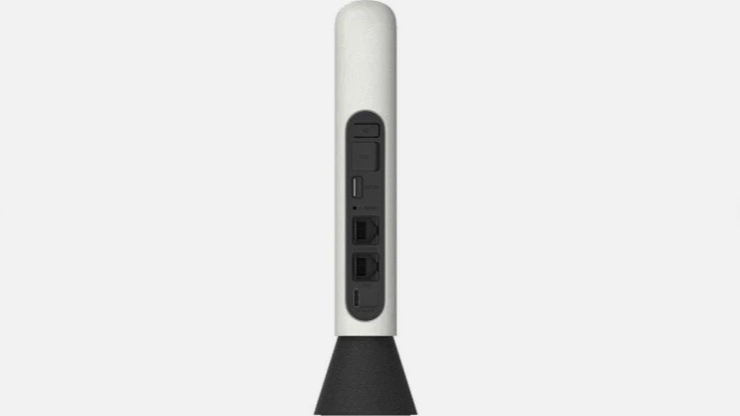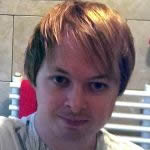EE isn’t content to stick with one 4G home broadband router, as it’s now on at least the fourth iteration of its 4G router, with the EE Smart 4G Hub (sometimes referred to as the EE Smart 4G Hub 2).
This white box offers a whole new look compared to the previous EE Smart 4G Hub model, as we’ll get to below, but many of the core specs and features are much the same.
So is the latest EE Smart 4G Hub an upgrade worth having? Our article aims to answer that question.
Design

The EE Smart 4G Hub is a narrow white rectangle with a black base, vents on one side, and ports at the back.
It comes in at 146 x 146 x 32mm and 350g, so it’s very thin. For reference, the previous EE Smart 4G Hub model is both shorter and lighter than this, but it’s also a lot thicker, at 128 x 100 x 55mm and 279g. That gives it a boxier look than the new router, but not necessarily a better look – both are designed to be plain and inoffensive.
Setup
The EE Smart 4G Hub comes with a quick start guide, and ‘quick’ really is the key word, as you basically just pop the supplied SIM card in and plug the router in. As with any router there are settings to tweak, such as changing the network name or security settings, but to simply get up and running it’s little more than plug-and-play.
This is one of the great things about 4G and 5G home broadband devices – there’s no need for an engineer to set things up, and you don’t even need a landline, which both simplifies things and potentially reduces the cost, as you could always get rid of your landline entirely with this.
These perks are true of all 4G home broadband routers though, so none of this is a specific selling point of the EE Smart 4G Hub, but it’s good to know nonetheless.
Performance
Judging the speed of a 4G home broadband router is never easy, because it will be so dependent on the coverage in your home, and even on how building materials and other obstacles affect the signal.
That’s why any figures given by networks or quoted in reviews should be taken with a pinch of salt, and perhaps that’s why EE itself is being so cagey here, saying simply that you can get average speeds of up to 40Mbps.
Based on what EE’s said about its 4G network in the past, we’d assume the peak speeds would be around 90Mbps, but in reality you’re likely to get less than that.
Beyond speed, the EE Smart 4G Hub also has two Ethernet ports allowing for wired connections, offers a 30-metre Wi-Fi radius, and can get up to 64 gadgets online at once. Those are all solid specs, but they’re in line with the competition, as you’ll see below.

Alternatives
If you’re set on using EE, then your main alternative to the EE Smart 4G Hub is the EE Smart 5G Hub, however this is only really useful if you get a 5G signal in your home. If you do though then it’s a far better option, as you can get much higher speeds that are likely to average around 150Mbps.
Some other specs here are similar, including two Ethernet ports, but the EE Smart 5G Hub can get more devices online, at over 100.
Your options widen if you’re open to other networks, with the Three 4G Broadband Hub offering similar specs to the EE Smart 4G Hub, but with four Ethernet ports. Both Three and Vodafone also offer 5G options in the form of the Vodafone GigaCube 5G and the Three 5G Broadband.
While specs vary a bit, in most cases coverage and plans will make a bigger difference, so choose a network with good coverage in your home, and plans and pricing that appeal – and go for 5G if it’s an option.
There’s also fibre broadband of course, and in short, fibre broadband is typically faster, and sometimes a lot faster, so if that’s available to you then it’s worth considering too, just be aware that the setup is more of a hassle, and that costs are sometimes higher.
Conclusion
The EE Smart 4G Hub is a capable and competitive 4G home broadband router that rivals devices from other networks.
However, while EE has been cagey on many of the specs, it doesn’t appear to be a significant upgrade on the previous model, and it’s in any case limited to a slightly dated technology (4G).
If you have 5G coverage in your home we’d always recommend spending a little more to get the extra speed offered by a 5G router (unless your internet needs are very minor), but if you don’t, then the EE Smart 4G Hub is the best option on EE, and one of the best you’ll find on any network. It’s just not very future-proofed.










